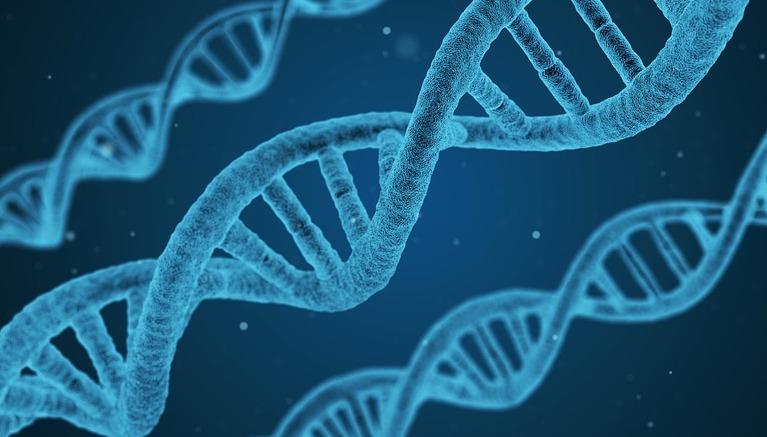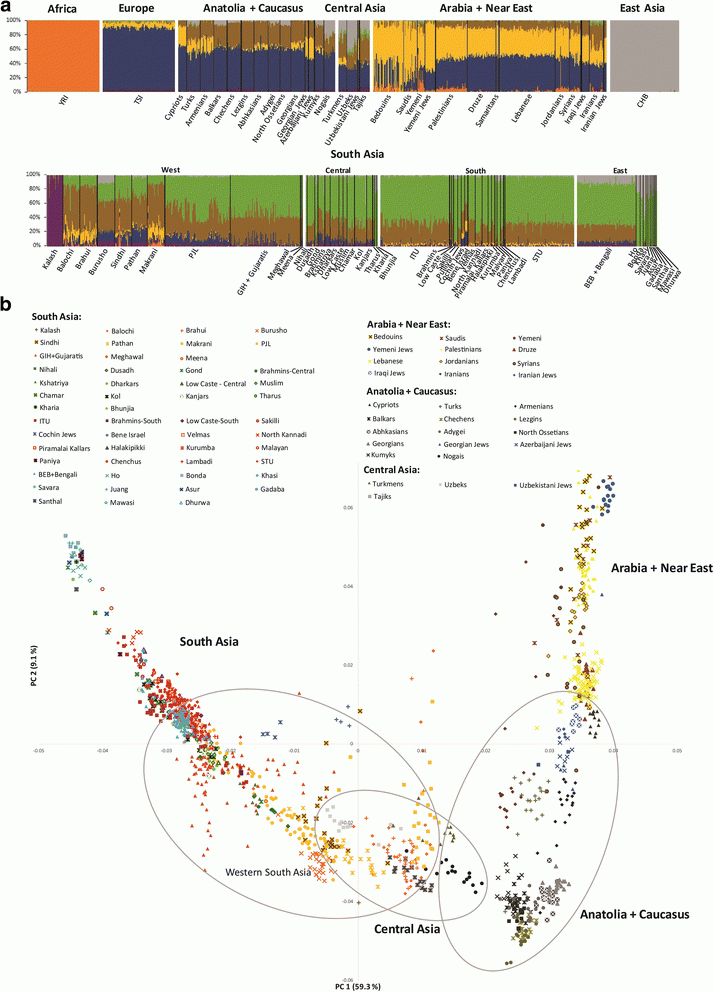Population Genetics Confirm Historians and Confound Hindutva Theories

Population Genetics Confirm Historians and Confound Hindutva Theories.
A recent paper on a genome wide study of the South Asian population strikingly confirms the work of historians, archeologists and historical linguists. Data shows that there was indeed significant migrations from Eurasian steppes into South Asia, starting from 3,500 years ago. The South Asian population – current Indian, Pakistani, Bangladeshi, Nepalese, and Sri Lankan population – have a significant central Asian component in their genetic make-up. The Indo Aryan (Indic) group of speakers have a higher signature of Central Asian genes than the corresponding Dravidian speakers; and the signatures are significantly higher in the male population. Incidentally, this signature in South Asia, is the highest in Pakistan and Gujarat.

Why should there be even a dispute about the origin of the Indo Aryan group of languages? Or immigration from outside South Asia? After all, the much larger language group of which Indo Aryan is part, is Indo European. If a group of languages have close affinities, it is obvious that they originate from a common proto language. So why this passion in denying that Indo Aryan group of languages have an origin, which could conceivably be outside India?
Here is the problem for the Hindutva ideologues. For those who believe that land is the origin of the nation – punya bhumi (matri bhumi or pitri bhumi) than the Hindu nation, as defined by Savarkar, Golwalkar and others, simply have to originate in India. If it does not, characterising all other religions as non Indian would not be tenable. Hinduism or the Vedic religion, is then simply another foreign incursion into India, and as non Indian, as Islam or Christianity. At best an early mover, but by no means original. The whole intellectual edifice of Hindutva would be exposed for what it is – a house of cards. That is why the venom against historians, who “unfortunately” have based their research on actual data, not on myth.
Recent study confirms migration from Eurasian steppes into South Asia
We have reported some of the earlier genetic studies in these columns. They showed that there is an Ancestral North Indian (ANI) population that differs somewhat, particularly in the male population, from an Ancestral South Indian (ASI) population. ANI has a larger proportion of Central Asian genetic markers than the ASI population. They had also shown that “upper” castes, or caste Hindus, have a higher component of the ANI ancestry.
The new study has confirmed the broad conclusions of the earlier studies, but has fleshed this out in much more details. It has also looked, not only at the issue of Eurasian steppe migration into South Asia, but two other migrations. One is the “modern” human migration from Africa into South Asia. This now can be dated to be around 50,000 years ago, and followed a coastal route from Africa. The second is when did the neolithic farmers arrive in South Asia (Mehrgarh, Baluchistan) and from where. The evidence indicates that such a migration of neolithic farmers took place from the Fertile Crescent (modern day Syria and Iraq) through Iran, around 9,000 years back. This is also supported by the genetic makeup of the agricultural crops that entered South Asia then, and ancient DNA found in the burial sites.
Though the migration of people with Central Asian genes into South Asia started 3,500 years back, it did not occur at one go. There seems to have been a continuous influx of people carrying such genetic material over a millennia. The timing of the migration into South Asia and its extent, also fits into the larger picture of Eurasian migrations. Apart from the major neolithic expansion because of agriculture, the next big shift was domestication of horses and the use of chariots in the Eurasian steppes. Historians had already identified the area between the Black Sea and the Caspian Sea as the “home” of the proto Indo European language speakers based on archaeological and other data. The genetic data has confirmed their conclusions. While one arm of the migration from Eurasian steppes went towards Europe, the other was towards South Asia.
Whether it is the near total domination of the Mongols of the Eurasian land mass 800 hundred years back, or the German blitzkrieg in the Second World War, mobility is much more important in war than in peace time. Therefore the argument that the expansion of the horse riding Indo European speakers into Europe and large parts of Asia, was much more of a military domination than a cultural one. While it is not possible to conclusively establish this through genetics, the marked difference between the male genetic make up from the female one, (and the genetic composition of various caste groups in South Asia), would support the theory of military domination.
Genome wide study and the new tools of enquiry
The DNA variations that we inherit are of three types. One is through the DNA sequences that are inherited as two copies, one from each parent; these are called autosomal DNA sequences. A second DNA inheritance is through the sequences in the Y-chromosome, which are inherited from father to son, and represents purely paternal inheritance. The third type of DNA inheritance is in the DNA sequences of the mitochondria, which carry their own independent DNA sequences, and are inherited only from the mother. With such genetic studies we can also analyse the differences between the paternal and the maternal population, or as the study above notes, “sex-biased dispersions”.
With a total of 3 billion base pairs in our genetic code, genome wide studies are complex. Each of us have slight differences in the genetic code we carry; they vary across locations and the actual code itself. It is by studying the changes in the inherited code – autosomal, paternal and maternal – over target population samples that we can see genetic drifts in the larger population. We also know the rate at which genetic changes or mutations take place, and can use this data to see when population bifurcations could have occurred.
What has changed in the study of population genetics, are new tools that allow for screening of a large number of DNA segments simultaneously for variations. This is possible by using what are called biochips or microarrays. Once we know the variations, it is possible to look at how far back they might have occurred, the direction of their flows, and therefore the possible migration paths of ancient populations.
The earlier studies looked at only a few locations for mutations. Today, using biochips, we can process a much larger number of such locations. The sheer amount of data is an order – or several orders – of magnitude higher. The consequence of creating such a large amount of data, is that analysing such data sets manually, or using even spreadsheets, is impossible. Various statistical tools have to be used to tease out the actual relations that are present in the data. This is the other major change that is taking place in population studies. These tools – from biochips to statistical programs – require large, cross disciplinary teams to undertake such research.
From science to nonsense – ICHR today
The above study conducted by a large group of researchers, most of them in public universities in Portugal, has been supported by grants from European Fund for Economic and Regional Development and from the Portuguese Foundation for Science and Technology. The lead author, Marina Silva, is doctoral student in Huddersfield School of Applied Sciences.
Clearly, good quality research is possible, if there is a willingness to work on serious science and supported by public institutions. Contrast this with the approach of the current Head of the Indian Council of Historical Research (ICHR), YS Rao. He advocates that only Vedas, Ramayana and Mahabharata, should be used as evidence; any evidence that disagrees with these – other texts, linguistics, archaeology and now genetics – are to be disregarded. If, for example, carbon dating of artefacts shows that the Vedic Age is 3,500 years old, that evidence is to be dismissed. So also presumably genetic evidence of the kind showing significant incursion of Eurasian genes around 3,500 years ago.
The gutting of research bodies in India and its leading institutions – Indian Council of Historical Research and Jawaharlal Nehru University – is not simply an attack on its political and social ethos, but also an attack on serious research. Genetics, mathematics and history have to come together to make sense of our past. Unlike Non-science or nonsense of the YS Rao variety.
Image Courtesy: pixabay.com
Disclaimer: The views expressed here are the author's personal views, and do not necessarilyrepresent the views of Newsclick
Get the latest reports & analysis with people's perspective on Protests, movements & deep analytical videos, discussions of the current affairs in your Telegram app. Subscribe to NewsClick's Telegram channel & get Real-Time updates on stories, as they get published on our website.























